High-avidity monoclonal antibodies against the human scavenger class B type I receptor efficiently block hepatitis C virus infection in the presence of high-density lipoprotein
- PMID: 17507483
- PMCID: PMC1951280
- DOI: 10.1128/JVI.00193-07
High-avidity monoclonal antibodies against the human scavenger class B type I receptor efficiently block hepatitis C virus infection in the presence of high-density lipoprotein
Abstract
The human scavenger class B type 1 receptor (SR-B1/Cla1) was identified as a putative receptor for hepatitis C virus (HCV) because it binds to soluble recombinant HCV envelope glycoprotein E2 (sE2). High-density lipoprotein (HDL), a natural SR-B1 ligand, was shown to increase the in vitro infectivity of retroviral pseudoparticles bearing HCV envelope glycoproteins and of cell culture-derived HCV (HCVcc), suggesting that SR-B1 promotes viral entry in an HDL-dependent manner. To determine whether SR-B1 participates directly in HCV infection or facilitates HCV entry through lipoprotein uptake, we generated a panel of monoclonal antibodies (MAbs) against native human SR-B1. Two of them, 3D5 and C167, bound to conformation-dependent SR-B1 determinants and inhibited the interaction of sE2 with SR-B1. These antibodies efficiently blocked HCVcc infection of Huh-7.5 hepatoma cells in a dose-dependent manner. To examine the role of HDL in SR-B1-mediated HCVcc infection, we set up conditions for HCVcc production and infection in serum-free medium. HCVcc efficiently infected Huh-7.5 cells in the absence of serum lipoproteins, and addition of HDL led to a twofold increase in infectivity. However, the HDL-induced enhancement of infection had no impact on the neutralization potency of MAb C167, despite its ability to inhibit both HDL binding to cells and SR-B1-mediated lipid transfer. Of note, MAb C167 also potently blocked Huh-7.5 infection by an HCV strain recovered from HCVcc-infected chimpanzees. These results demonstrate that SR-B1 is essential for infection with HCV produced in vitro and in vivo and suggest the possible use of anti-SR-B1 antibodies as therapeutic agents.
Figures
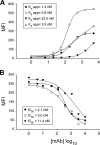
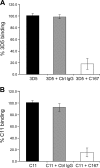
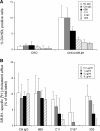
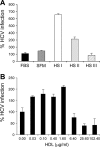

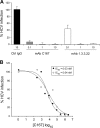
References
-
- Acton, S., A. Rigotti, K. T. Landschulz, S. Xu, H. H. Hobbs, and M. Krieger. 1996. Identification of scavenger receptor SR-BI as a high density lipoprotein receptor. Science 271:518-520. - PubMed
-
- Barth, H., C. Schafer, M. I. Adah, F. Zhang, R. J. Linhardt, H. Toyoda, A. Kinoshita-Toyoda, T. Toida, T. H. Van Kuppevelt, E. Depla, F. Von Weizsacker, H. E. Blum, and T. F. Baumert. 2003. Cellular binding of hepatitis C virus envelope glycoprotein E2 requires cell surface heparan sulfate. J. Biol. Chem. 278:41003-41012. - PubMed
-
- Bartosch, B., A. Vitelli, C. Granire, C. Goujon, J. Dubuisson, S. Pascale, E. Scarselli, R., Cortese, A. Nicosia, and F. L. Cosset. 2003. Cell entry of hepatitis C virus requires a set of coreceptors that include the CD81 tetraspanin and the SR-B1 scavenger receptor. J. Biol. Chem. 278:41624-41630. - PubMed
Publication types
MeSH terms
Substances
Grants and funding
LinkOut - more resources
Full Text Sources
Other Literature Sources
Medical
Research Materials

